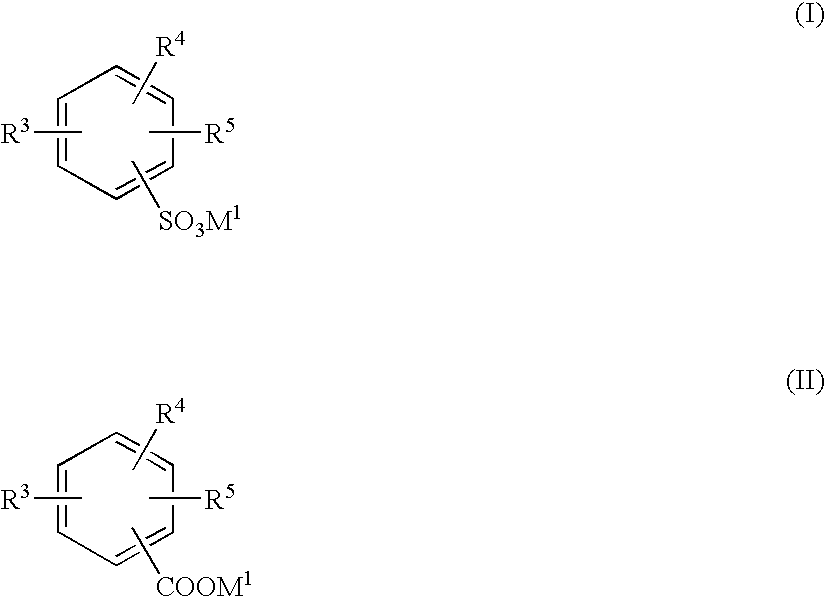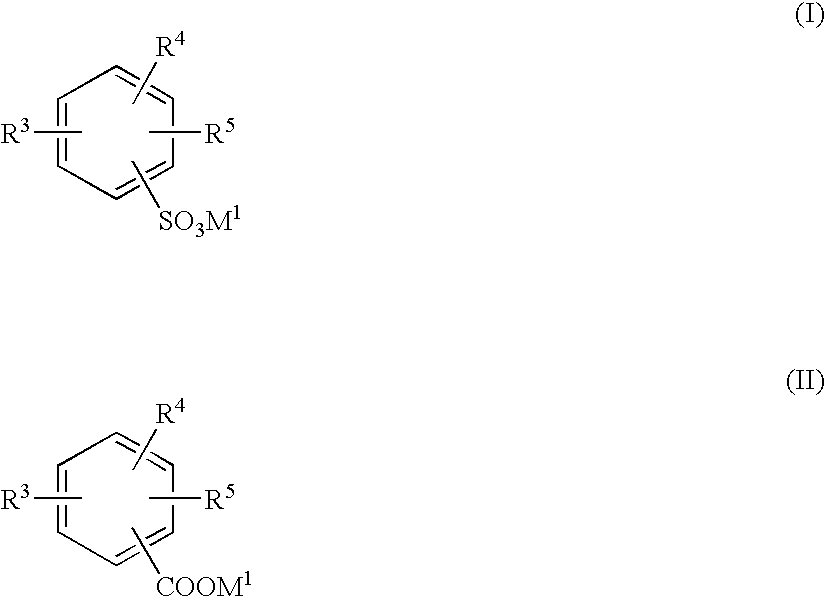Fountain solution composition for lithographic printing and heat-set offset rotary printing process
a technology of lithographic printing and composition, which is applied in the direction of rotary lithographic machines, inks, printing, etc., can solve the problems of blanket piling, ink component and paper component gradually accumulating, and ink component and paper component accumulating, etc., to achieve stable printing, high quality, and favorable operation environment
- Summary
- Abstract
- Description
- Claims
- Application Information
AI Technical Summary
Benefits of technology
Problems solved by technology
Method used
Image
Examples
examples
[0094]The present invention will now be described more in detail by way of examples thereof. It should be noted that % used herein indicates % by weight unless otherwise mentioned.
examples 11-17
[0104]Experiment was conducted in the same manner as Example 3 in Table 1, except that ethylene glycol monoisobutyl ether was replaced with an organic solvent shown in Table 2, and the following evaluation was carried out.
(1) Evaluation of Blanket Piling
[0105]Same as Examples 1-10.
(2) Evaluation of Deposition of Components
[0106]Same as Examples 1-10.
(3) Evaluation of Minimum Value of Water Dial
[0107]Water dial equipped with the printing machine (dial value of from 1 to 99, this value is bigger, a rotating speed of the dampening roller becomes bigger, and an amount of water provided on a plate surface becomes larger) was changed gradually from a small value to a big value, and the value at which scumming on 40% dots area was resolved was measured and defined as “minimum value of water dial”. A difference of each minimum value of water dial in Examples 11 to 17 from the minimum value of water dial in Example 3 was measured, and said value was evaluated as a difference of minimum value...
examples 18-24
[0112]Experiment was conducted in the same manner as Example 3 in Table 1, except that N-octylpyrrolidone was replaced with a pyrrolidone derivative or an acetylene derivative shown in Table 3 below in an equal quantity, and the following evaluation was carried out.
(1) Evaluation of Blanket Piling
[0113]Same as Examples 1-10.
(2) Evaluation of Deposition of Components
[0114]Same as Examples 1-10.
(3) Evaluation of Ink-Stain (Ink Feedback) on the Dampening Roller
[0115]After completion of the printing, ink-stain on the dampening roller were visually observed and ranked as follows.
∘: Little ink-stain
Δ: Slight ink-stain
x: Obvious ink-stain
[0116]Results are shown in Table 3.
TABLE 3PyrrolidoneDepositionInk-stain onderivative / BlanketofdampeningExampleacetylene derivativepilingcomponentsroller3N-octylpyrrolidone48◯18no additive63Δ19P-(1)59Δ20P-(2)61Δ21A-(3)66Δ22A-(4)55◯23A-(5)62◯Δ24A-(6)52◯
[0117]The symbols in the pyrrolidone derivative / acetylene derivative column represent the following compou...
PUM
| Property | Measurement | Unit |
|---|---|---|
| weight | aaaaa | aaaaa |
| compositions | aaaaa | aaaaa |
| area | aaaaa | aaaaa |
Abstract
Description
Claims
Application Information
 Login to View More
Login to View More - R&D
- Intellectual Property
- Life Sciences
- Materials
- Tech Scout
- Unparalleled Data Quality
- Higher Quality Content
- 60% Fewer Hallucinations
Browse by: Latest US Patents, China's latest patents, Technical Efficacy Thesaurus, Application Domain, Technology Topic, Popular Technical Reports.
© 2025 PatSnap. All rights reserved.Legal|Privacy policy|Modern Slavery Act Transparency Statement|Sitemap|About US| Contact US: help@patsnap.com



